Pain in upper eye socket. Eye Pain: Causes, Symptoms, and Treatments for Discomfort in the Upper Eye Socket
What causes pain in the upper eye socket. How can you identify the symptoms of various eye conditions. What are the most effective treatments for eye pain and discomfort. When should you seek medical attention for eye-related issues.
Understanding Eye Anatomy and Common Sources of Pain
Eye pain can originate from various structures within and around the eye. To better comprehend the potential causes of discomfort, it’s essential to familiarize ourselves with the key components of ocular anatomy:
- Cornea: The clear, protective outer layer of the eye
- Sclera: The white part of the eye
- Conjunctiva: A thin membrane covering the sclera and inner eyelids
- Iris: The colored portion of the eye surrounding the pupil
- Orbit: The bony socket housing the eye and its muscles
- Extraocular muscles: Responsible for eye movement
- Nerves: Transmit visual information to the brain
- Eyelids: Protect the eye and distribute moisture
Understanding these structures can help pinpoint the source of eye pain and guide appropriate treatment strategies.

Common Eye Conditions Causing Pain and Discomfort
Various eye conditions can lead to pain and discomfort in the upper eye socket. Some of the most frequently encountered issues include:
Blepharitis
Blepharitis is an inflammation or infection of the eyelid. While it typically doesn’t cause severe pain, it can lead to discomfort and irritation. Symptoms may include redness, itching, and a gritty sensation in the eyes.
Conjunctivitis (Pink Eye)
Conjunctivitis, commonly known as pink eye, is an inflammation of the conjunctiva. It can be caused by allergies, viruses, or bacteria. While not usually painful, it can cause significant discomfort, itching, and a characteristic redness in the affected eye.
Corneal Abrasions
A corneal abrasion is a scratch on the surface of the eye. Despite its seemingly minor nature, it can cause significant pain and discomfort. Corneal abrasions can occur from rubbing the eye or foreign objects coming into contact with the eye’s surface.
Keratitis
Keratitis refers to inflammation or infection of the cornea. It can be caused by bacteria, viruses, or other factors such as wearing contact lenses for extended periods or improper lens hygiene. Keratitis can lead to significant pain and vision problems if left untreated.
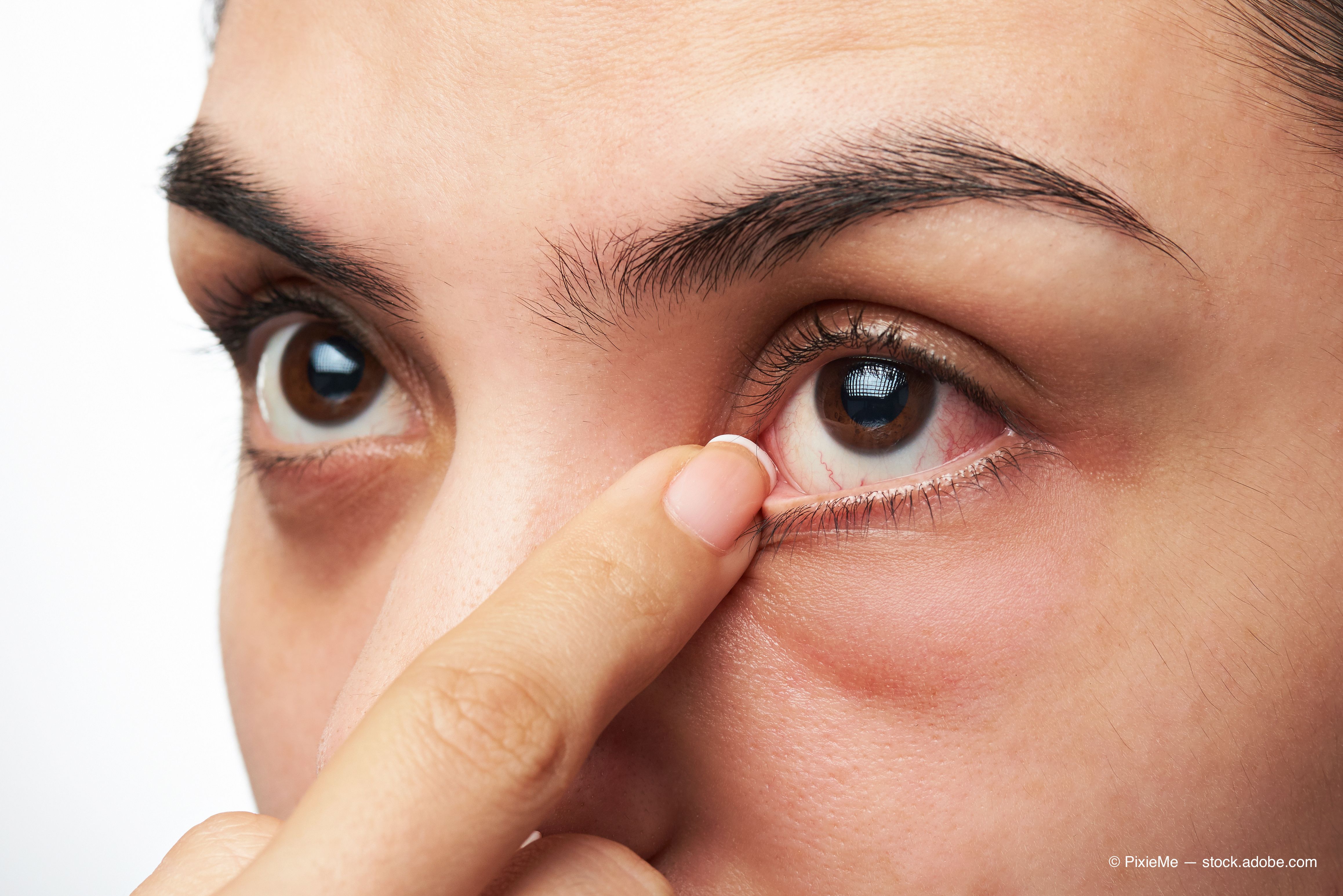
Serious Eye Conditions Requiring Immediate Attention
While many eye conditions can be managed with simple treatments, some require urgent medical intervention. These include:
Glaucoma
Glaucoma is a group of eye conditions characterized by increased pressure within the eye. While most forms of glaucoma develop gradually without early symptoms, acute angle-closure glaucoma can cause sudden, severe eye pain accompanied by nausea, vomiting, headache, and vision changes. This condition is considered a medical emergency and requires immediate treatment to prevent vision loss.
Iritis and Uveitis
Iritis and uveitis refer to inflammation inside the eye, which can result from trauma, infections, or autoimmune conditions. Symptoms include eye pain, redness, and often decreased vision. Prompt treatment is crucial to prevent complications and preserve eyesight.
Optic Neuritis
Optic neuritis is an inflammation of the optic nerve, which can be associated with conditions like multiple sclerosis. It can cause pain, particularly when moving the eyes, and may lead to vision loss if not addressed promptly.

Identifying Symptoms and Associated Conditions
Eye pain rarely occurs in isolation. Recognizing accompanying symptoms can help identify the underlying cause and guide appropriate treatment. Common symptoms that may accompany eye pain include:
- Vision changes or loss
- Discharge (clear or thick)
- Foreign body sensation
- Headache
- Light sensitivity
- Nausea or vomiting
- Redness or pinkness in the eye
- Excessive tearing
- Crusted eyelids upon waking
The presence of these symptoms, especially when combined with eye pain, warrants a visit to an eye care professional for proper diagnosis and treatment.
Diagnostic Procedures for Eye Pain
When you visit an eye doctor for pain or discomfort, they may employ various diagnostic tools and techniques to determine the cause of your symptoms. Common diagnostic procedures include:
Slit-Lamp Examination
A slit-lamp exam uses a specialized microscope with a bright light to examine the structures of your eye in detail. This allows the doctor to inspect the cornea, iris, lens, and other components for signs of damage or disease.
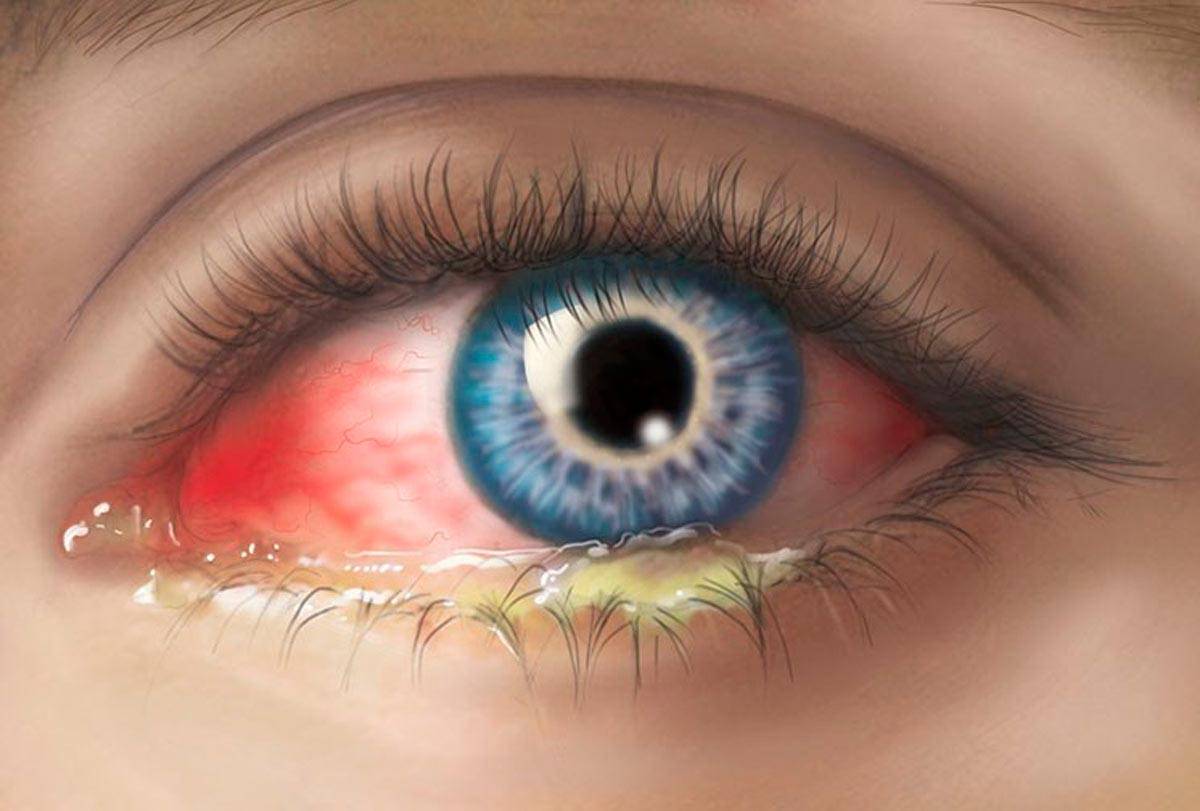
Pupil Dilation
Dilating drops are used to expand the pupil, allowing the doctor to see deep into the eye. This is particularly useful for examining the retina and optic nerve.
Tonometry
Tonometry measures the pressure inside your eye, which is crucial for diagnosing conditions like glaucoma. There are several methods of performing tonometry, including the “air puff” test and more precise contact methods.
These diagnostic tools, combined with a thorough medical history and symptom assessment, help eye care professionals accurately diagnose the cause of eye pain and recommend appropriate treatment.
Treatment Options for Various Eye Conditions
The treatment for eye pain varies depending on the underlying cause. Here are some common treatment approaches for various eye conditions:
Conjunctivitis Treatment
For bacterial conjunctivitis, antibiotic eye drops are typically prescribed. Viral conjunctivitis often resolves on its own, but antiviral medications may be recommended in severe cases. Allergic conjunctivitis can be managed with antihistamine eye drops or oral medications.
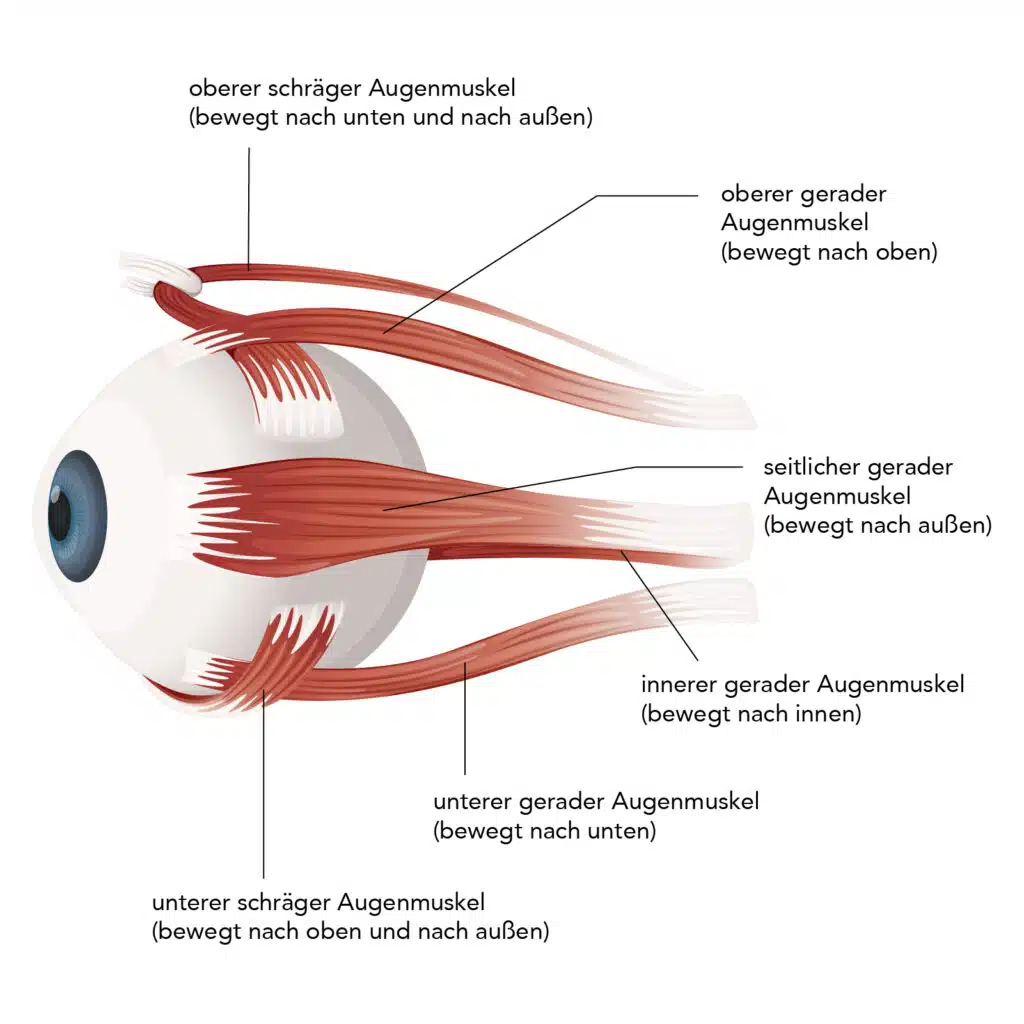
Corneal Abrasion Management
Most corneal abrasions heal on their own within a few days. Your doctor may prescribe antibiotic ointment or drops to prevent infection. In some cases, a special contact lens may be used to promote healing and reduce discomfort.
Glaucoma Therapy
Treatment for glaucoma aims to reduce intraocular pressure. This is typically achieved through eye drops, oral medications, or in some cases, surgical intervention. The specific treatment plan depends on the type and severity of glaucoma.
Keratitis Treatment
The approach to treating keratitis depends on its cause. Bacterial keratitis is treated with antibiotic eye drops or ointments, while viral keratitis may require antiviral medications. In severe cases, hospitalization and intensive treatment may be necessary.
Iritis and Uveitis Management
Treatment for iritis and uveitis typically involves corticosteroid eye drops to reduce inflammation. In some cases, oral medications or injections may be necessary. The underlying cause, if identified, will also be addressed as part of the treatment plan.
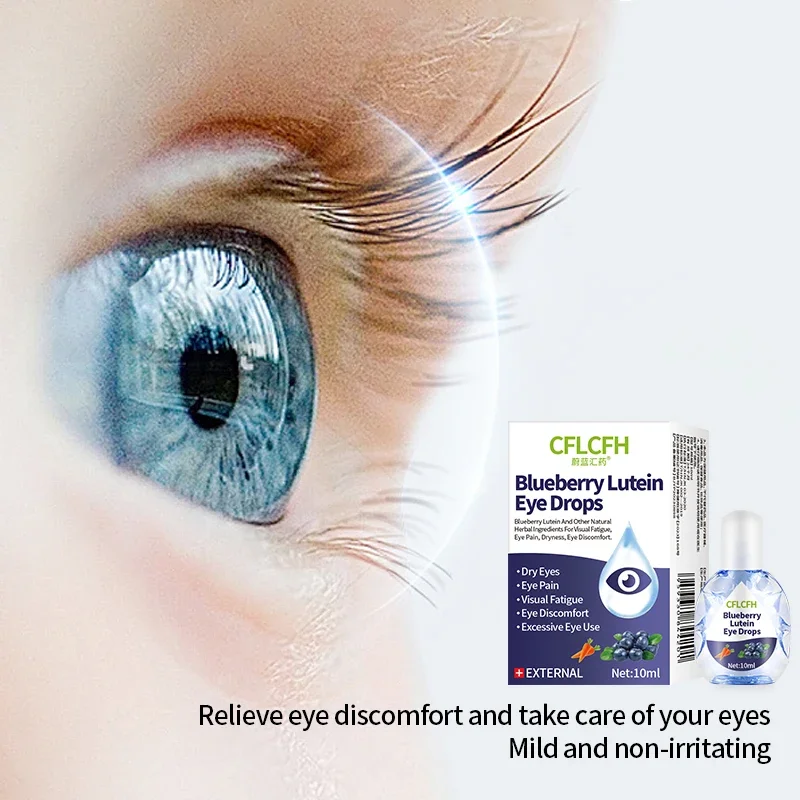
Prevention and Eye Health Maintenance
While not all eye conditions can be prevented, there are steps you can take to maintain good eye health and reduce the risk of developing painful eye conditions:
- Practice good hygiene: Wash your hands regularly and avoid touching or rubbing your eyes unnecessarily.
- Use proper eye protection: Wear safety glasses when engaging in activities that pose a risk of eye injury.
- Follow contact lens care instructions: If you wear contact lenses, adhere to proper cleaning and replacement schedules.
- Maintain a healthy lifestyle: A balanced diet, regular exercise, and avoiding smoking can contribute to overall eye health.
- Schedule regular eye exams: Routine check-ups can help detect and address eye problems early.
- Manage underlying health conditions: Conditions like diabetes and hypertension can affect eye health, so proper management is crucial.
- Protect your eyes from UV radiation: Wear sunglasses that block UV rays when outdoors.
By following these preventive measures and maintaining good eye care habits, you can reduce the likelihood of experiencing painful eye conditions and preserve your vision for years to come.

When to Seek Medical Attention for Eye Pain
While some minor eye discomfort may resolve on its own, certain symptoms warrant immediate medical attention. You should seek professional help if you experience:
- Sudden, severe eye pain
- Eye pain accompanied by vision changes
- Pain that persists for more than a few days
- Eye pain associated with headache, nausea, or vomiting
- Signs of eye infection, such as redness, swelling, or discharge
- Eye pain following trauma or injury to the eye
- Any sudden changes in vision, including loss of vision, double vision, or flashes of light
Prompt medical attention can prevent complications and ensure appropriate treatment for potentially serious eye conditions. Do not hesitate to contact an eye care professional or seek emergency care if you have concerns about your eye health.
Understanding the various causes of eye pain, recognizing symptoms, and knowing when to seek help are crucial aspects of maintaining good eye health. By staying informed and proactive about your ocular well-being, you can ensure that your eyes remain healthy and pain-free for years to come.

Why Do My Eyes Hurt? 11 Possible Causes of Eye Pain and Soreness
Written by WebMD Editorial Contributors
- Where Does It Hurt?
- Common Eye Problems
- Other Symptoms
- Tests to Diagnose Eye Pain
- Treatments
Nearly everyone has had sore eyes at some point. Sometimes they get better on their own, but they can also be a sign of something more serious.
Your eye doctor can figure out what’s going on and find the right treatment for you.
Sometimes discomfort or pain results from a problem in your eye or the parts around it, such as:
- Cornea: The clear window in the front of your eye that focuses light
- Sclera: The whites of your eyes
- Conjunctiva: The ultra-thin covering of your sclera and the inside of your eyelid
- Iris: The colored part of your eye, with the pupil in the middle
- Orbit: A bony cave (eye socket) in your skull where the eye and its muscles are located.
- Extraocular muscles: They rotate your eye.

- Nerves: They carry visual information from your eyes to your brain.
- Eyelids: Outside coverings that protect and spread moisture over your eyes.
Blepharitis: An inflammation or infection of the eyelid which typically is not painful
Conjunctivitis (pinkeye): This is inflammation of the conjunctiva. It can be from allergies or infections (viral or bacterial). Blood vessels in the conjunctiva swell. This makes the part of your eye that’s usually white look red. Your eye could also get itchy and gunky. This condition is typically not painful.
Corneal abrasions: That’s the official name for a scratch on this part of your eye. It sounds minor, but it can hurt. It’s easy to do, too. You can scratch your eye while rubbing it. Your doctor will give you antibiotic drops. It should get better in a couple of days without further problems.
Corneal infections (keratitis): An inflamed or infected cornea is sometimes caused by a bacterial or viral infection. You may be more likely to get it if you leave your contacts in overnight or wear dirty lenses.
You may be more likely to get it if you leave your contacts in overnight or wear dirty lenses.
Foreign bodies: Something in your eye, like a bit of dirt, can irritate it. Try to rinse it out with artificial tears or water. If you don’t get it out, it can scratch your eye.
Glaucoma: This family of conditions causes fluid to build up in your eye. That puts pressure on your optic nerve. If you don’t treat it, you could lose your sight. Most of the time there are no early symptoms. But a type called acute angle-closure glaucoma causes pressure inside your eye to rise suddenly. Symptoms include severe eye pain, nausea and vomiting, headache, and worsening vision. This is an emergency. You need treatment ASAP to prevent blindness.
Iritis or uveitis: An inflammation inside your eye from trauma, infections, or problems with your immune system. Symptoms include pain, red eye, and, often, worse vision.
Optic neuritis: An inflammation of the nerve that travels from the back of the eyeball into your brain. Multiple sclerosis and other conditions or infections are often to blame. Symptoms include loss of vision and sometimes deep discomfort when you look from side to side.
Sinusitis: An infection in one of your sinuses. When pressure builds up behind your eyes, it can cause pain on one or both sides.
Stye: This is a tender bump on the edge of your eyelid. It happens when an oil gland, eyelash, or hair follicle gets infected or inflamed. You may hear your doctor call it a chalazion or hordeolum.
Eye pain can happen on its own or with other symptoms, like:
- Less vision
- Discharge: It can be clear or thick and colored
- Foreign body sensation — the feeling that something is in the eye, whether real or imagined
- Headache
- Light sensitivity
- Nausea or vomiting
- Red eye or pinkeye
- Tearing
- Your eye is crusted shut with discharge when you wake up.

Other symptoms along with sore eyes can be a clue to what is causing the pain.
See your eye doctor if you have eye pain, especially if you have less vision, headache, or nausea and vomiting.
Eye doctors use a variety of tools to diagnose eye pain:
- A slit-lamp exam uses bright light to look at all the structures of your eye.
- Dilating drops expand your pupil to let the doctor see deep into your eye.
- A tonometer is a tool that measures eye pressure. The doctor uses it to diagnose glaucoma.
Just as causes can vary, so do treatments. They target the specific cause of eye pain.
Conjunctivitis: Antibacterial eyedrops can cure bacterial conjunctivitis. Antihistamines in the form of eyedrops, a pill, or a syrup can improve conjunctivitis from allergies.
Corneal abrasions: These heal on their own with time. Your doctor might prescribe an antibiotic ointment or drops.
Glaucoma: You’ll get eyedrops and maybe pills to reduce pressure. If they don’t work, you may need surgery.
Infected cornea: You may need antiviral or antibacterial eyedrops.
Iritis: The doctor will treat this with steroid, antibiotic, or antiviral eyedrops.
Optic neuritis: It’s treated with corticosteroids.
Styes: Use warm compresses at home for a few days.
The only way to sort out the causes of eye pain and to get the right treatment is to see a doctor. Your vision is precious. Protect it by taking eye pain seriously.
Top Picks
Inflammation of the Orbit – Eye Disorders
By
Richard C.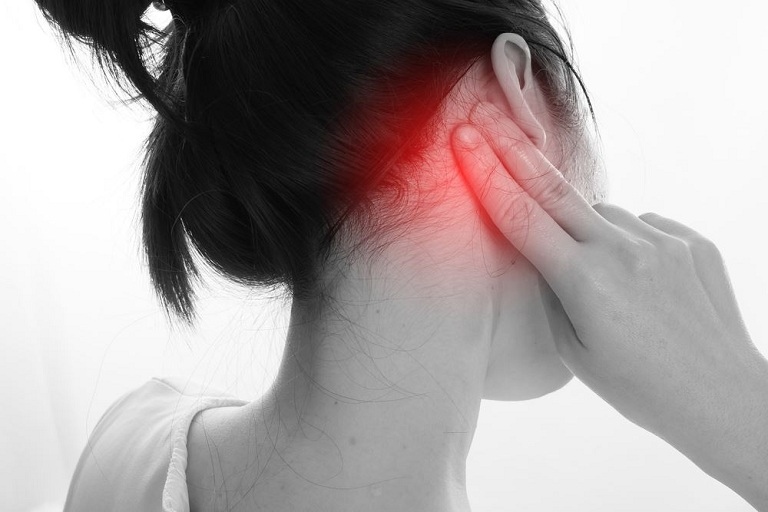 Allen
Allen
, MD, PhD, Baylor College of Medicine
Reviewed/Revised Oct 2022
VIEW PROFESSIONAL VERSION
Any or all of the structures within the eye socket (orbit) may become inflamed because of a bodywide inflammatory disorder or an inflammatory disorder that affects only the orbit.
(See also Introduction to Eye Socket Disorders Introduction to Eye Socket Disorders The eye sockets (orbits) are bony cavities that contain and protect the eyes and their supporting structures (see figures An Inside Look at the Eye and Structures That Protect the Eye). Disorders… read more .)
People of all ages can be affected. Inflammation can be brief or long lasting, may or may not be caused by an infection, and can recur.
Inflammation of the orbit can be the result of a bodywide (systemic) inflammatory disorder. Sometimes the inflammation affects only the orbit. Inflammation can be caused by infection or by a noninfectious disorder. Inflammation of the orbit due to infection that affects the eyelid, skin, and tissues around the front of the eye is called preseptal cellulitis Preseptal Cellulitis Preseptal cellulitis is infection of the eyelid and of the skin and tissues around the front of the eye. (See also Introduction to Eye Socket Disorders.) Both preseptal cellulitis and orbital… read more . Inflammation that affects the tissue within the orbit and around and behind the eye is called orbital cellulitis Orbital Cellulitis Orbital cellulitis is infection affecting the tissue within the orbit and around and behind the eye. Infection can spread to the orbit from sources such as the sinuses around the nose. Symptoms… read more . Noninfectious orbital inflammation has many causes. The most common cause of noninfectious inflammation of the eye socket is thyroid eye disease (also known as Graves ophthalmopathy Graves disease Hyperthyroidism is overactivity of the thyroid gland that leads to high levels of thyroid hormones and speeding up of vital body functions.
Inflammation can be caused by infection or by a noninfectious disorder. Inflammation of the orbit due to infection that affects the eyelid, skin, and tissues around the front of the eye is called preseptal cellulitis Preseptal Cellulitis Preseptal cellulitis is infection of the eyelid and of the skin and tissues around the front of the eye. (See also Introduction to Eye Socket Disorders.) Both preseptal cellulitis and orbital… read more . Inflammation that affects the tissue within the orbit and around and behind the eye is called orbital cellulitis Orbital Cellulitis Orbital cellulitis is infection affecting the tissue within the orbit and around and behind the eye. Infection can spread to the orbit from sources such as the sinuses around the nose. Symptoms… read more . Noninfectious orbital inflammation has many causes. The most common cause of noninfectious inflammation of the eye socket is thyroid eye disease (also known as Graves ophthalmopathy Graves disease Hyperthyroidism is overactivity of the thyroid gland that leads to high levels of thyroid hormones and speeding up of vital body functions.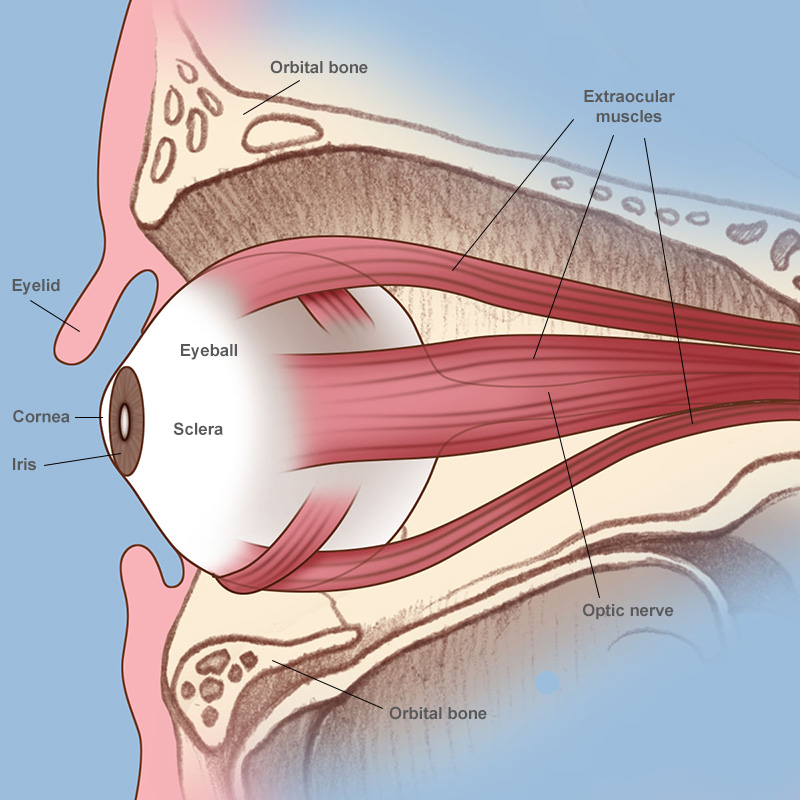 Graves disease is the most common cause of hyperthyroidism… read more ).
Graves disease is the most common cause of hyperthyroidism… read more ).
Systemic inflammatory disorders that affect the eye/orbit include granulomatosis with polyangiitis Granulomatosis with Polyangiitis Granulomatosis with polyangiitis often begins with inflammation of small- and medium-sized blood vessels and tissues in the nose, sinuses, throat, lungs, or kidneys. The cause is unknown. The… read more (formerly known as Wegener granulomatosis), in which there is generalized inflammation of blood vessels (called vasculitis Overview of Vasculitis Vasculitic disorders are caused by inflammation of the blood vessels (vasculitis). Vasculitis can be triggered by certain infections or drugs or can occur for unknown reasons. People may have… read more ). Another type of inflammation is called IgG4-related orbital inflammation (see also IgG4-Related Disease IgG4-Related Disease Immunoglobulin G4-related disease (IgG4-RD) is an uncommon immune disorder that usually affects multiple tissues and organs with tumor-like masses and/or painless enlargement. Symptoms depend… read more ). IgG4-related orbital inflammation can affect the same structures as granulomatosis with polyangiitis but typically has fewer symptoms.
Symptoms depend… read more ). IgG4-related orbital inflammation can affect the same structures as granulomatosis with polyangiitis but typically has fewer symptoms.
Inflammatory disorders that affect only the eye include scleritis Scleritis Scleritis is severe, destructive inflammation of the sclera (the tough, white, fiber layer covering the eye) that may threaten vision. Scleritis sometimes occurs in people who have a bodywide… read more , in which the white coat of the eye (sclera) becomes inflamed. Eyelid disorders Eyelid and Tearing Disorders with inflammation are discussed elsewhere. Inflammation affecting any or all parts of the orbit is called inflammatory orbital pseudotumor (which is not really a tumor and is not a cancer) or nonspecific orbital inflammation. Inflammation affecting the tear (lacrimal) gland, located at the upper outer edge of the orbit (see figure ), is called dacryoadenitis. Inflammation affecting one of the muscles that move the eye is called myositis.
Symptoms vary depending on which structures are actually inflamed. In general, symptoms start rather suddenly, typically over a few days. Pain and redness of the eyeball or eyelid usually occur. Pain can be severe and incapacitating at times. Abnormal bulging of the eyes (proptosis Eyes, Bulging Bulging or protruding of one or both eyes is called proptosis or exophthalmos. Exophthalmos is usually used when describing bulging eyes caused by Graves disease, a disorder causing overactivity… read more ), double vision, and vision loss are also possible. Symptoms related to IgG4-related orbital inflammation, on the other hand, are usually minimal. Rarely is there any discomfort, but rather proptosis and eyelid swelling Eyelid Swelling A person may experience swelling in one or both eyelids. Swelling may be painless or accompanied by itching or pain. Eyelid swelling is distinct from bulging eyes, although a few disorders can… read more are common. Other symptoms depend upon the disorder causing the orbital inflammation.
Computed tomography Computed Tomography (CT) and Magnetic Resonance Imaging (MRI) A variety of tests can be done to confirm an eye problem or to determine the extent or severity of an eye disorder. Each eye is tested separately. In general, angiography involves injecting… read more (CT) or magnetic resonance imaging Computed Tomography (CT) and Magnetic Resonance Imaging (MRI) A variety of tests can be done to confirm an eye problem or to determine the extent or severity of an eye disorder. Each eye is tested separately. In general, angiography involves injecting… read more (MRI) is done. A doctor may do other blood tests and take a sample from the inflamed area for examination under a microscope (biopsy) to determine the cause.
Many disorders causing inflammation of the orbit are treated with a corticosteroid drug, which can be given by mouth. Corticosteroids can be given by vein (intravenously) if the inflammation is severe. Radiation therapy or drugs and treatments that change the body’s immune responses may sometimes be used. IgG4 typically responds to corticosteroids or, if necessary, other drugs to change the body’s immune response (for example, rituximab).
IgG4 typically responds to corticosteroids or, if necessary, other drugs to change the body’s immune response (for example, rituximab).
Sometimes surgery is needed to help resolve or prevent progression of thyroid eye disease.
| Generic Name | Select Brand Names |
|---|---|
rituximab | RIABNI, Rituxan, RUXIENCE, truxima |
NOTE:
This is the Consumer Version.
DOCTORS:
VIEW PROFESSIONAL VERSION
VIEW PROFESSIONAL VERSION
Copyright © 2023 Merck & Co., Inc., Rahway, NJ, USA and its affiliates. All rights reserved.
All rights reserved.
Test your knowledge
Take a Quiz!
Pain in the forehead, eye, temple
This pain is often confused with migraine, and patients are forced to take various migraine drugs and analgesics for many years without experiencing significant relief.
The most common cause of pain in the forehead, eyebrow and supraorbital region is neuralgia of the first branch of the trigeminal nerve. The trigeminal nerve is the main sensory nerve of the face. In other words, it is the main nerve in the face that conducts pain. And if he is affected (gets sick), then he himself becomes a source of pain. This is a very branched nerve. Its node (trigeminal ganglion) is located in the cranial cavity, at the base of the brain, its nuclei are located in the brain stem. Of the 12 pairs of cranial nerves, the trigeminal nerve is the 5th in a row, it also has a motor function, the fibers of the third (mandibular branch, which conducts pain from the lower jaw of the mandibular teeth) can also perform a motor function, they direct the movements of masticatory muscles. Accordingly, if pain occurs in the lower jaw, then the 3rd (mandibular) branch of the trigeminal nerve is affected.
Accordingly, if pain occurs in the lower jaw, then the 3rd (mandibular) branch of the trigeminal nerve is affected.
For an accurate diagnosis of the cause of the pain, always at the first stage, a therapeutic and diagnostic blockade of nerves and plexuses is performed. The second stage, as a rule, are various ablation procedures.
The most effective and radical treatment for trigeminal neuralgia is thermal ablation of the ganglion (Gasser ganglion), which is located in the cranial cavity at the base of the brain.
Under combined anesthesia (intravenous + local), a special cannula under visual control is inserted into the cranial cavity in the Gasser node.
After that, using the electrode of the ablator device, the node is heated to a temperature of 70-90 degrees Celsius.
This manipulation is a high category of complexity and is performed in our center by highly qualified specialists.
In this way, you can permanently relieve a person from pain in any branch of the trigeminal nerve.
PHOTO: A CANNULA PLACED TO THE GASSEROUS KNODE THROUGH THE OVAL HOLE OF THE SKULL
More details about the blockade of the Gasser node can be found here0004
It is not always necessary to ablate the trigeminal ganglion specifically. If the duration of neuralgia of the I branch of the trigeminal nerve does not exceed 2 months, then sometimes it is enough to ablate the supraorbital nerve (the final branch of this nerve). This procedure is performed under ultrasound guidance, the supraorbital nerve is ablated at the site of its exit through the supraorbital foramen.
Supraorbital Nerve Cryoablation for Herpetic Neuralgia
Causes of neuralgia of the first branch of the trigeminal nerve:
1. Tumor invading the orbit
2. Injury
3. Infection (most often caused by the herpes virus)
4. Complication after radiotherapy
5. Idiopathic nerve injury (cause remains unknown)
Often, pain in the first branch of the trigeminal nerve can spread not only to the forehead, wing of the nose or upper part of the orbit, but also to the temporal region. Treatment of this branch also relieves pain in the temple. But the first branch is not always the cause of pain in the temporal region.
Treatment of this branch also relieves pain in the temple. But the first branch is not always the cause of pain in the temporal region.
In this case, the most likely culprit would be the auricular-temporal nerve. Which is a branch of the third (mandibular) branch of the trigeminal nerve.
In such cases, a diagnostic blockade of this nerve is performed, followed by ablation.
causes, symptoms, diagnosis and treatment
Trigeminal neuralgia (trigeminal neuralgia) – a disease during which attacks of pain (intense, shooting, burning) occur in areas of innervation – areas of supply of nerve fibers to the temporal, frontal areas, skin face, chewing muscles, ocular conjunctiva, some muscles of the oral cavity (for example, maxillofacial).
General information
Pain in the face area is considered the most difficult in medicine, as it is associated with pathologies of both the nervous system and the ENT organs, dentoalveolar system or eyes. However, trigeminal neuralgia is often the cause of such pain.
However, trigeminal neuralgia is often the cause of such pain.
The problem is at the top of the rating of neurological diseases due to a large number of factors: excruciating paroxysmal pain, social and labor maladjustment (it is extremely difficult for a person to work productively, he is in constant tension), long-term treatment. Symptoms can be determined, but only a specialist can prescribe the exact cause of the disease and a truly effective treatment. In the 5th City Hospital of Minsk, all conditions have been created for high-quality neurological and neurosurgical care: from diagnosis to treatment.
Pathogenesis
Trigeminal neuralgia develops due to disorders of the central component (blood circulation in the nucleus) or peripheral (peripheral parts of the nerve). For this reason, different approaches are used for treatment.
Pathogenetic mechanisms include vascular, endocrine-metabolic and immunological factors. Because of them, the sensitivity of the nuclei changes and the focus of pathological activity in the central nervous system is fixed. After that, in the zones of innervation of different branches of the nerve, trigger (hypersensitive) areas appear, which, when irritated, come on bouts of pain on the face.
After that, in the zones of innervation of different branches of the nerve, trigger (hypersensitive) areas appear, which, when irritated, come on bouts of pain on the face.
The vascular factor is involved in classical neuralgia, when a vertically crossing arterial loop acts on the nerve root.
Vasculoneural conflict (a conflict between a nerve and a vessel) is especially taken into account in people who begin to sclerosis of the arteries and nerve fibers. With tregiminal neuralgia of the elderly, this is the most common case.
Autoimmune processes (attacking the body’s own cells) cause inflammatory reactions during dental treatment and colds. In this case, it is they who cause trigeminal neuralgia and pain.
Classification
Trigeminal neuralgia is classified according to several criteria: the nature of the occurrence, the nature of the pain, the affected area (localization).
Primary and secondary neuralgia.
The most popular classification is related to etiology (nature of occurrence).
- Primary idiopathic . Occurs as a response to vascular compression (squeezing) of the trigeminal root. Most often in practice, such compression occurs in the region of the brain stem.
- Secondary symptomatic . The consequence of infections, the occurrence of neoplasms and their growth, bone changes.
In order to recognize the nature of trigeminal neuralgia, tomography data (neuroimaging) of the skull and the nerve itself are used.
In case of true neuralgia, the treatment, first of all, should focus on the nature of the disease, while in the case of secondary neuralgia, there is a struggle with the symptoms and elimination of the underlying disease.
Secondary neuralgia in this case can have a central and peripheral form of manifestation. With the central form of pain appear in the area of one or more branches of the trigeminal nerve. In the peripheral form, the zone of entry of the nerve root into the cerebral bridge is involved, in most cases, the loop of the cerebellar artery has pathological changes.
The nature of the pain and the affected area
Another classification is based on the nature of the pain.
- Type 1 TN . With neuralgia of this type, typically pronounced burning sensations are characteristic. In this case, the pain is acute, but intermittent, episodic. The duration of the episodes may vary.
- Type 2 TN . Constant and dull, aching pain.
Trigeminal neuralgia type 1 TN is more common, type 2 TN is less common. At the same time, the disease with this type of manifestation of the disease is most difficult to diagnose, since the picture of the disease is similar to a number of other neurological diseases, and sometimes dental problems, in particular problems with the temporomandibular joint.
The affected area may be different, its scale, neighboring zones may be involved. In this regard, the following levels of damage are distinguished:
- Damage to one of the peripheral branches of the trigeminal nerve .
 When the 1st branch is affected, the sensitivity of the skin is disturbed (especially in the forehead and anterior scalp, eyelids, back of the nose, mucous membranes of the upper part of the nasal cavity, a number of reflexes, for example, superciliary, are disturbed). With the defeat of the 2nd branch, the sensitivity of the skin on the cheekbones, cheeks is lost, the sensitivity of the skin around the outer corners of the eyes is lost, there are problems with the sensitivity of the skin in the region of the upper jaw, lips, nose. With the defeat of the 3rd branch, the lower part of the face (chin, lower lip), tongue are not felt, sometimes there is a problem with the masticatory muscles (up to paralysis).
When the 1st branch is affected, the sensitivity of the skin is disturbed (especially in the forehead and anterior scalp, eyelids, back of the nose, mucous membranes of the upper part of the nasal cavity, a number of reflexes, for example, superciliary, are disturbed). With the defeat of the 2nd branch, the sensitivity of the skin on the cheekbones, cheeks is lost, the sensitivity of the skin around the outer corners of the eyes is lost, there are problems with the sensitivity of the skin in the region of the upper jaw, lips, nose. With the defeat of the 3rd branch, the lower part of the face (chin, lower lip), tongue are not felt, sometimes there is a problem with the masticatory muscles (up to paralysis). - Damage to the trigeminal nerve root at the level of the base of the brain . Most often – the defeat of the semilunar node, located on the large root of the trigeminal nerve. Most often it is affected by diseases of a viral nature. Launched neuralgia of the semilunar node is fraught with the rapid development of conjunctivitis and keratitis.
 As a result, not only the help of a neurologist, but also an ophthalmologist is needed
As a result, not only the help of a neurologist, but also an ophthalmologist is needed - Damage in the area of the nuclei of the brainstem . The most painful symptomatology, similar to “electric shocks”. The sensitivity of the zones associated with any branch of the trigeminal nerve may be lost.
- Dental plexalgia . As the name implies, localization is associated with the zone of innervation of the dental plexus. The pain is very excruciating. It seems that absolutely everything hurts: the sky, cheekbones, temples, ears, neck (especially the upper third), the back of the head. Especially the pain increases with pressure on the problem area.
- Damage to the pterygopalatine node . The processes of the maxillary nerve and a number of fibers in the region of the carotid artery, nasal mucosa, and salivary glands were involved.
- Periorbital area affected . Persistent unilateral headache in the region of the trigeminal nerve innervation is combined with lacrimation, shortness of breath, redness of the face.

Causes of inflammation of the trigeminal nerve
Both injuries (fractures, tissue ruptures, unprofessional conduction anesthesia) and destruction of the myelin sheath of the nerve itself (a typical problem for patients with multiple sclerosis) can lead to damage to the trigeminal nerve.
But more often we are talking about the inflammatory nature of the pathology.
The most common causes leading to inflammation of the trigeminal nerve:
- inflammation of the membranes of the brain or spinal cord (meningitis),
- diseases of the paranasal sinuses (sinusitis),
- malocclusion,
- ganglia borne herpes ( nodes) of the trigeminal nerve,
- hypothermia: everyone knows the phrase: “Cold nerve”. In fact, a person’s tissues are supercooled, and then the nerve becomes inflamed.
- bacterial infection of the upper respiratory tract, throat.
Symptoms of inflammation of the trigeminal nerve
The following symptoms indicate inflammation of the nerve:
- Pain in the facial part.

- Headache, more often migraine.
- Burning sensation, as if “an electric shock” is felt in the cheeks, cheekbones, jaw, forehead, eyes. The pain is aggravated by movement of the facial muscles, chewing, noise, bright light, touching the skin.
- Problems with the blinking reflex (decrease in amplitude) and, accordingly, an increase in the vulnerability of the eyes.
- Involuntary twitching of facial muscles (nervous tic).
- Irritability.
Diagnosis
Only on the basis of a survey, a doctor can distinguish between tertiary neuralgia and Schostad’s syndrome (with such a syndrome – longer attacks), post-herbic pain, typical migraines. To understand the full picture, it is important to conduct a comprehensive diagnosis:
- Tomography. For accurate diagnosis and proper treatment, it is extremely important to have the most complete data on the state of the brain and the choice of a detailed scheme (the scheme is important for accurate positioning) when performing magnetic resonance imaging of the trigeminal nerve.
 The most accurate data can be obtained by MRI with contrast.
The most accurate data can be obtained by MRI with contrast. - Tomography (scanning) scanning of the trigeminal nerve. It makes it possible to create layered images, identify neurovascular conflict, signs of destruction of the myelin sheath of nerves. Scanning allows the doctor to get a complete picture of what the nerve under study looks like, what happens at the point of its exit from the brainstem.
- It is extremely important that tomography allows not only to reveal that there is a neurovascular conflict, but also to understand its cause. This may be a conflict of the cerebellar arteries, a neuroma (neoplasm) of the nerve. In many cases, the trigeminal nerve scan is done with a facial scan at the same time.
- X-ray of the jaws (if the main problem is suspected to be dental).
- Angiography. It is important for verification (confirmation) of the vascular genesis of compression with an impressive size of the aneurysm and vascular loop or aneurysm.
Also, in most cases, blood and urine tests are prescribed (especially the role of these studies is valuable in pathologies that have arisen as a result of infectious diseases).
Treatment
Treatment is aimed at pain relief and prevention of disease recurrence.
In case of a milder course of the disease, drug treatment can help, with advanced stages, extensive lesions, surgical treatment is used. It also helps to overcome the nature of the disease directly.
Physiotherapeutic methods are also used in the treatment. But most doctors are inclined: they are not effective as the main ones, but only as auxiliary ones: they enhance the effect of conservative drug treatment, and can also be used after surgery at the rehabilitation stage. For example, drug treatment in the acute stage can be effectively combined with light therapy, especially infrared ray therapy in a small dosage. In the acute period and at the time of rehabilitation, the proper effect is provided by phonophoresis, electrophoresis, darsonvalization. In the non-acute phase, it is useful to take therapeutic baths (for example, with minerals), massages, acupuncture, paraffin therapy.
Drug treatment
The following drugs are prescribed for conservative therapy: The most common drugs for drug treatment are carbamazepine, finlepsin, tegretol. The drug of first choice in most clinics is carbamazepine. It is effective in relieving pain in 70-80% of patients with trigeminal neuralgia. Surgery is the most effective treatment for trigeminal neuralgia. They allow not only to eliminate pain, but also to eliminate the chain of impulses, to influence the conflict between the cranial nerve root coming out of the brain stem and the vessel that adjoins it.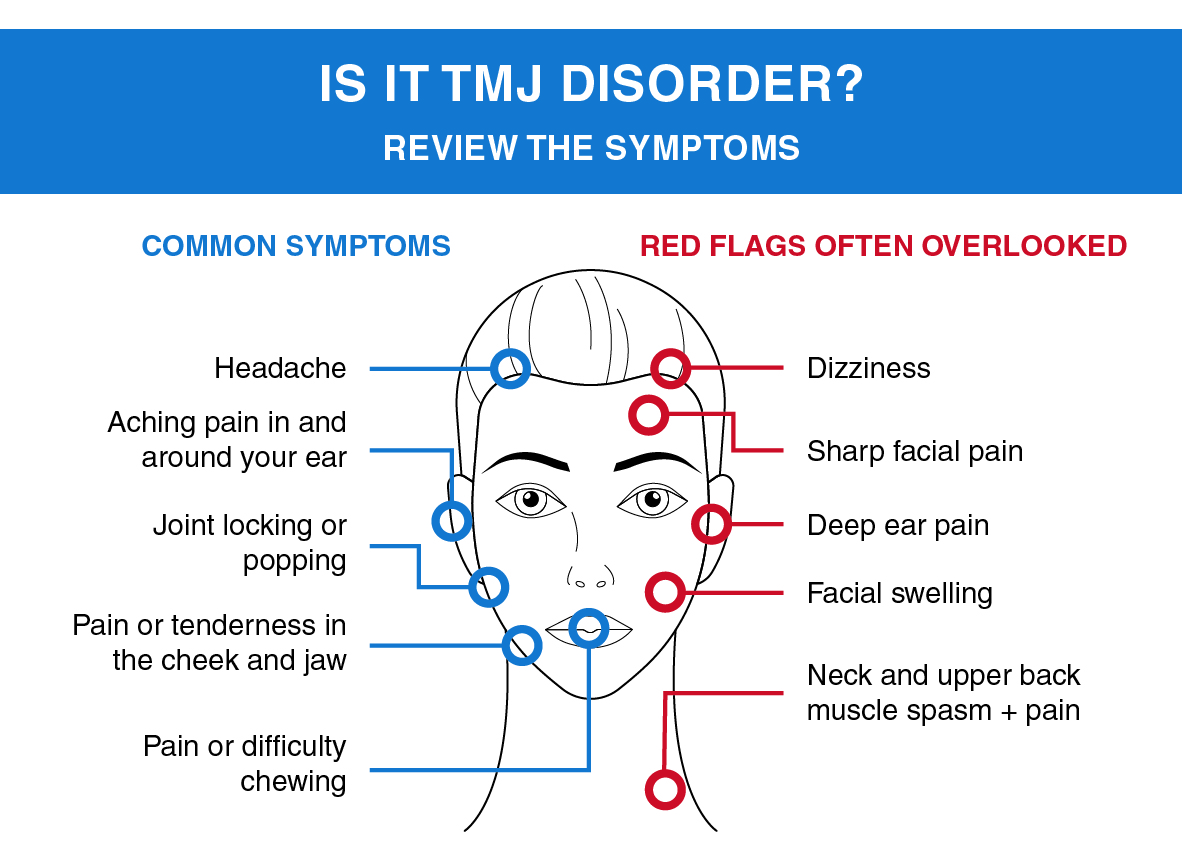
Surgical treatment
And, if the cause is just such a conflict, doctors recommend immediately thinking about an operation, rather than dragging out time and trying to solve the problem with medication.
At the same time, microvascular decompression of the trigeminal nerve root is considered the most effective and safe (nerve is preserved). The operation is the installation of a gasket (protector) between the nerve and the vessel.
Microvascular decompression of the trigeminal nerve root refers to transcranial endoscopic interventions and is performed through a mini-access (in fact, we are talking about a cosmetic incision – no more than 2. 5×2 cm, minimal blood loss, no long-term rehabilitation is required)
5×2 cm, minimal blood loss, no long-term rehabilitation is required)
Mechanical destruction of peripheral branches, glycerine rhizotomy, laser thermocoagulation, radiofrequency destruction can also be used. With a victory over pain, they allow you to cope with dignity, but unlike microvascular decompression, alas, with such operations, the task of preserving the nerve is not. Therefore, such operations are used more often in cases where microvascular decompression of the trigeminal nerve root is impossible for some reason. For example, glycerin rhizotomy is often the only possible way to deal with neuralgia in patients with a severe somatic condition in old age with a list of other diseases.
Modern surgical techniques, akin to mechanical destruction, make it possible to exclude additional destructive interventions and at the same time stimulate the necessary deep structures.
Among the complications of surgical intervention with the help of glycerol rhizotomy, radiofrequency destruction, sensitivity disorders on the face, keratopathy (corneal dystrophy) are distinguished.
A possible complication after microvascular decompression may be an ischemic infarction of the brainstem, air embolism, damage to the trochlear nerve, the occurrence of cerebellar hematoma, paresis (decrease) of the facial muscles.
For this reason, it is extremely important to clearly weigh the degree of risk for the patient, to choose the right method of surgical intervention. The choice of one or the other in each case depends on the individual characteristics of each patient. Careful attention to these details helps to minimize the risks of complications.
The location of the operation is also important. All the nuances are important: how accurate the preliminary diagnosis is, the qualifications and experience of the neurosurgeon.
Procedures
An alternative for patients in whom complex operations are contraindicated, but drug, physiotherapy treatment does not give an effect, the following procedures can be used during an exacerbation: The procedure allows you to influence the fibers responsible for pain, but it is problematic to organize a thorough control of the procedure. Only 80% of patients experience real relief.
Only 80% of patients experience real relief.
Prevention
Inflammation of the trigeminal nerve is not only important to treat in a timely manner. It is important to prevent relapses, and here prevention plays a huge role:
- Avoid any drafts . It is important and necessary to ventilate the room, but do not get under the through currents of air, do not work, do not sleep under the air conditioner.

- Avoid hypothermia of the face and head . Do not ignore hats and scarves in the cold season.
- Protect head and face from injury .
- See your dentist regularly . Avoid periodontitis (inflammation of the tissues near the roots of the teeth). If you treat caries, pulpitis, periodontitis in a timely manner with modern dentistry, you can avoid it.
- Be aware of herpes . This is not just a “cold on the lips”, but a disease that can provoke the occurrence of trigeminal neuralgia.
- Fight emotional overstrain . Meditate.
- Take exercise therapy . Focus on exercises that are aimed at working out the muscles (improving their tone), increasing the pulse (cardio training).
Remember! Relapses are cyclical. At the same time, exacerbations are more common in the autumn-spring period. Therefore, at this time, give the greatest importance to prevention.
Consequences and complications
It is important to start treating neuralgia in time. Delayed treatment is fraught with the following complications:
- Incessant pain (both headache and facial).
- Facial paralysis and as a result facial asymmetry.
- Weakening of hearing, vision.
- Weakening of facial muscles, appearance of wrinkles.
- Violation of conduct. Constant fears. A person constantly thinks about the fact that he can resume an attack. Therefore, he tries to move minimally when chewing (or chews, displacing food by one cheek), smiling a little.
Forecast
Neglected trigeminal neuralgia is fraught with the fact that the quality of life of a person is rapidly deteriorating, because the pain is excruciating and debilitating.
And, on the contrary, timely treatment can significantly improve the quality of life.
Surgical intervention provides a particularly favorable prognosis.


 When the 1st branch is affected, the sensitivity of the skin is disturbed (especially in the forehead and anterior scalp, eyelids, back of the nose, mucous membranes of the upper part of the nasal cavity, a number of reflexes, for example, superciliary, are disturbed). With the defeat of the 2nd branch, the sensitivity of the skin on the cheekbones, cheeks is lost, the sensitivity of the skin around the outer corners of the eyes is lost, there are problems with the sensitivity of the skin in the region of the upper jaw, lips, nose. With the defeat of the 3rd branch, the lower part of the face (chin, lower lip), tongue are not felt, sometimes there is a problem with the masticatory muscles (up to paralysis).
When the 1st branch is affected, the sensitivity of the skin is disturbed (especially in the forehead and anterior scalp, eyelids, back of the nose, mucous membranes of the upper part of the nasal cavity, a number of reflexes, for example, superciliary, are disturbed). With the defeat of the 2nd branch, the sensitivity of the skin on the cheekbones, cheeks is lost, the sensitivity of the skin around the outer corners of the eyes is lost, there are problems with the sensitivity of the skin in the region of the upper jaw, lips, nose. With the defeat of the 3rd branch, the lower part of the face (chin, lower lip), tongue are not felt, sometimes there is a problem with the masticatory muscles (up to paralysis). As a result, not only the help of a neurologist, but also an ophthalmologist is needed
As a result, not only the help of a neurologist, but also an ophthalmologist is needed

 The most accurate data can be obtained by MRI with contrast.
The most accurate data can be obtained by MRI with contrast.